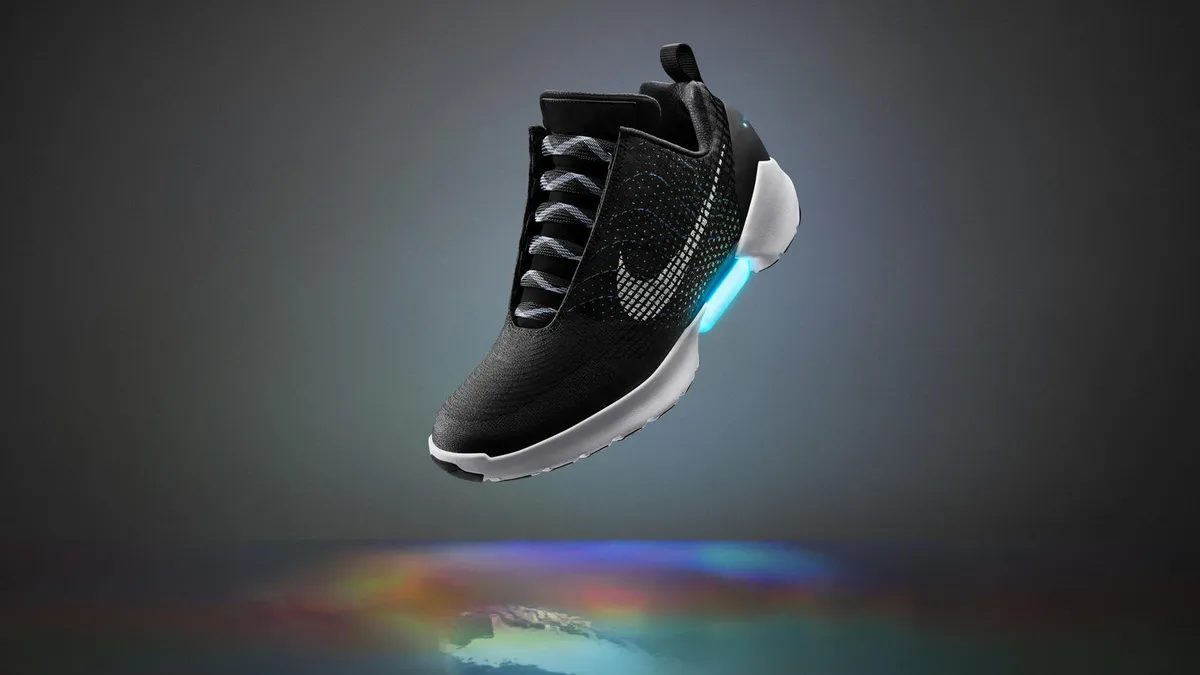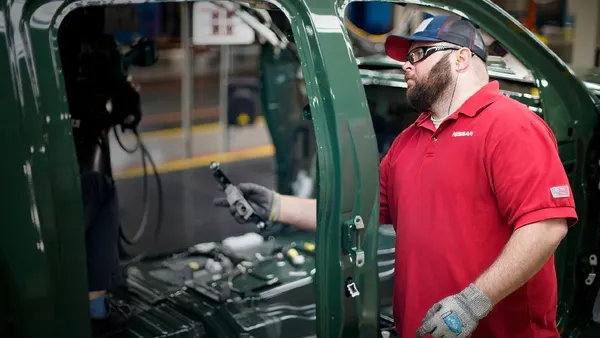Dive Brief:
- Nike is looking to reduce lead times for its orders from 60 days to a mere ten days by redesigning its logistics network, nearshoring more facilities, improving contract manufacturer relationships and investing in automation, Quartz reports.
- By the end of 2018, Nike plans to have installed a minimum of 1,200 new automated machines at its Asian suppliers' factories, in order to speed cutting, cementing, shoe assembly, and sole creation
- Industry experts predict that such efforts will likely improve margins and help attain greater market share. Nearshoring reduces shipping expenses, import duties, and over-production risks.
Dive Insight:
Nike's goal is a supply chain manager's dream: the operations team has found a way to reduce lead times by 83.3% by combining various process and technology innovations.
But Nike's efforts are based on more than a drive to innovate. The brand is responding to consumers' demand for a greater variety of clothes to be available more often. Yet recent examples show succeeding in that mission — shared by consumer brands across various industries — requires a full supply chain transformation.
The reason is switching to a direct-to-consumer model means upturning how the design-to-market cycle operates in the first place.
In the past, Nike's product cycle began with a "futures order" months in advance. This would then prompt more than 1 million workers at 566 factories to produce an estimated 1.3 billion units and ship them through 75 distribution centers to more than 30,000 retailers in 190 countries.
But now, the company seeks a business model where "consumer demand is our signal to anticipate and demand," COO Erik Sprunk told investors at Nike's 2017 Investor Day. "To make this shift, we're digitizing our end-to-end supply chain and creating a model with shorter lead times to deliver what consumers want, when they want it, where they want it."
Sprunk says this transformation relies heavily on two goals: developing new methods of manufacturing and "relentlessly driving automation in our traditional methods of make."
To achieve these, Nike two years ago announced it would open a 125,000 square foot innovation center, which — now open — appears to be paying off. Sprunk provided one example where the Advanced Product Creation Center (APCC) found a way to produce footwear uppers with 30% fewer steps and up to 50% less labor.
However, since Nike does not independently manufacture many of its products, such a business model shift requires even closer relationships with its contract manufacturers. Nike cites its relationship with Flex as an example of a successful strategic relationship.
"By 2023, together with Flex, we plan to produce tens of millions of pairs nearshore with more than 25% of those volumes delivered through NIKE Direct on a short lead time responsive model," Sprunk said. "We're inventing new manufacturing capabilities at scale together. We collaborate, innovate, and when appropriate, we bring these capabilities across to our entire source base."
Nike has been talking about speeding its design-to-product cycle for years now, but the recent investors day conference provided real examples of how it plans to do so. Transforming a supply chain to adapt to consumers requires both technology and process innovation, upending perceptions of the traditional supply chain, and also close relationships with suppliers.














